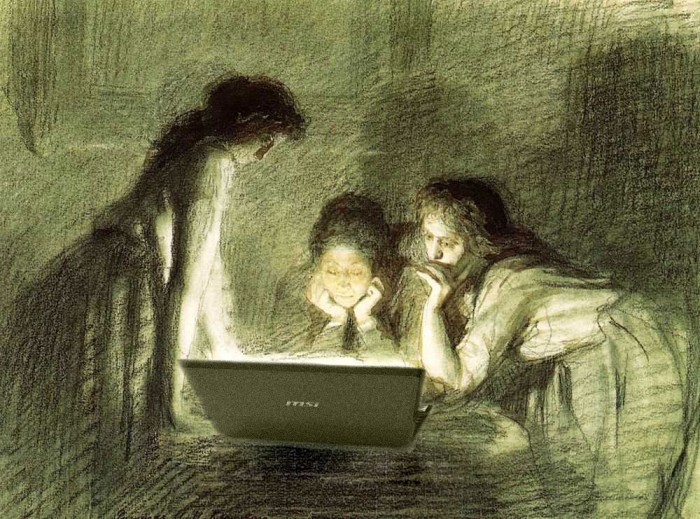Archive for December, 2015
Happy New Year: Conway’s Game of Life in SQL
It's Yuletide again and today I'd like to tell about an old tradition in Russia. Its origins can be traced back to pre-Christian, pagan rites of the ancient Slavic tribes.
Each year on the Christmas eve, when it is freezing cold outside and the Grandfather Frost comes out to inspect his vast domain, young girls gather in an old, poorly lit bathhouse and try to look into the future.

There are many ways to do a Christmas divination: some prefer candle wax, some go with cats or mirrors, some use a good old deck of cards. But the old women can tell you of another way to look into the future. It requires skill and patience, but it is said an intrepid soul brave enough to look the eternity in the eye can unveil the mystery of the future and see the good and the bad that the next year will bring.
To do this, you need a large enough checkered board and a bag of dried beans, black and white. Carefully arranging the black beans into letters three squares wide and five squares tall, you write your question on the board. When ready, you exclaim the magic words: "RENDRAG! YAWNOC! NNAMEUN NOV!" and begin the magic rite.
Those of you who can spell backwards can scroll down now.
Those who are not familiar with Conway's Game of Life and don't believe in Christmas magic, can google for it (do it, if you never have, it's fun).
And I will go on and explain the rules to the rest of my readers who do believe in magic pagan rites.
First, you check how many black beans surround each tile on the board. If it is surrounded by exactly two black beans, it stays the same next turn, for the two is the number of the true love; if it is surrounded by exactly three, it gets the bean next turn, for the three is the number of new life; any other number means the tile is empty the next turn, for empty is the world devoid of life and love.
You use the white beans to mark the tiles which are to get or to lose the bean on the next turn, for white means change.
If you are close to the edge of the board and don't have adjacent tiles from either side, wrap around to another side, that is top to bottom, left to right or vice versa. This symbolizes the old belief that our world was bagel-shaped.
Singing an ancient song, you do the divination turn by turn, moving the beans around. With time, certain patterns emerge on the board. Some resemble a crane, some resemble a beehive, other just seems chaotic. When you do as many turns as there are days in the new year, you look at the patterns and interpret them.
Now, let's try to do this in SQL. We'll be using PostgreSQL 9.4 as it supports some very nice features.
 Subscribe in a reader
Subscribe in a reader